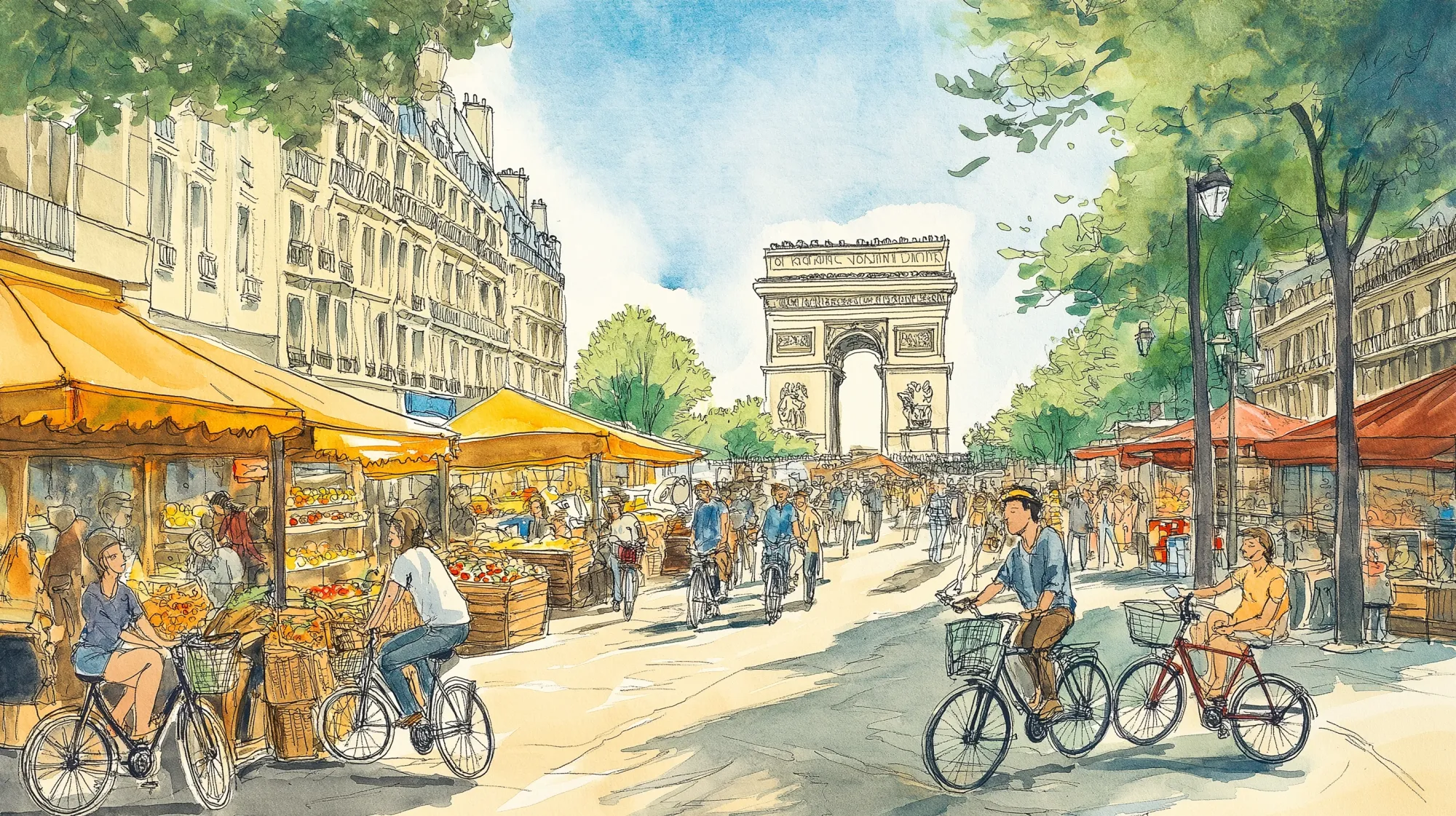Paris in the (low-carbon) spring

Have you ever been to Paris?
It has been, in the past, a city known for crazy, fast-moving traffic. This was observably, objectively true.
All you had to do was stand to watch the Arc de Triomphe (from a safe distance). Witness the unpredictable, circling cars: drunken pirañas circling a wading cow. The noise, the smell, the confusion, the wonderful swearing in French! Les klaxons ... merde!
Even the quiet side-streets bore witness to the primacy of the automobile. Watch as one Parisian parked an ancient Peugeot between two new Mercedes (boink, bonk, bang!): in the battle for parking, the job of bumpers on every car — old or new, rusted or shiny, big or little — was to bump.
Well, that was once the case.
With the 2024 Olympics at least partly in mind, Paris has closed over 100 streets to vehicular traffic. Paris has embraced congestion pricing that, among other things, has tripled parking costs for oversized vehicles (here's looking at you, Parisian Hummer owners). Take note, New York.
This has given Paris room to eliminate 50,000 parking spots and to create 1,300 kilometres of bike lanes. At the same time, Paris has made all kinds of changes in policy and practice to promote greener urban living.1
The initiatives have been successful: a study about air quality and the Olympics suggested the most problematic air-quality issue would likely be too much ozone.3
Did it work out that way? Well, in places, yes, but not quite everywhere. In particular, sites near le Périph (the Paris ring road) still had the high pollution levels associated with internal combustion traffic. This is pretty easy to understand, given the huge increase in traffic the Olympics always cause. But other places did, indeed, have significantly better air quality.
And, the most important point: a lot of the changes to the Paris streets are permanent.4
C'est magnifique!
About Hope
If you look at the top of this web page, you'll notice "HOPE", a menu item that takes you to a series of short articles about victories in the climate fight. This is one of those articles.
People don't have a lot of time. They are inundated with negative news about the environment. While these negative news stories can communicate the seriousness of the situation, they can also convince people to believe that things are hopeless ... and they are not. So each little, digestible bit provides a peek into one tiny little thing that has gone right.
Don't think for a minute, though, that any of these issues are simple. Usually, a whole world of physics, chemistry, policy, and actions undergirds each of these stories. We encourage you to look more deeply, to investigate the references at the end of each article, to take advantage of each little positive window into a bigger, more complex situation.
See below for some reading suggestions.
Reading
- NBC News. “What Does a City That Has Spurned Cars Look like? Olympics Visitors to Paris Will Get a Look,” June 2, 2024. https://www.nbcnews.com/science/environment/paris-olympics-city-reduce-air-pollution-rcna153470.
- “France – Air Pollution Country Fact Sheet 2024,” December 10, 2024. https://www.eea.europa.eu/en/topics/in-depth/air-pollution/air-pollution-country-fact-sheets-2024/france-air-pollution-country-fact-sheet-2024.
- Bougault, Valerie, Richard Valorso, Roland Sarda-Esteve, Dominique Baisnee, Nicolas Visez, Gilles Oliver, Jordan Bureau, Fatine Abdoussi, Veronique Ghersi, and Gilles Foret. “Paris Air Quality Monitoring for the 2024 Olympics and Paralympics: Focus on Air Pollutants and Pollen,” September 1, 2024. https://doi.org/10.1136/bjsports-2024-108129.
- Bicycling. “Paris Closed 100 Streets to Cars for Good. Now, the City Is a Cyclists’ Paradise.,” February 6, 2024. https://www.bicycling.com/culture/a46651907/paris-closed-100-streets-to-cars-for-good/.
